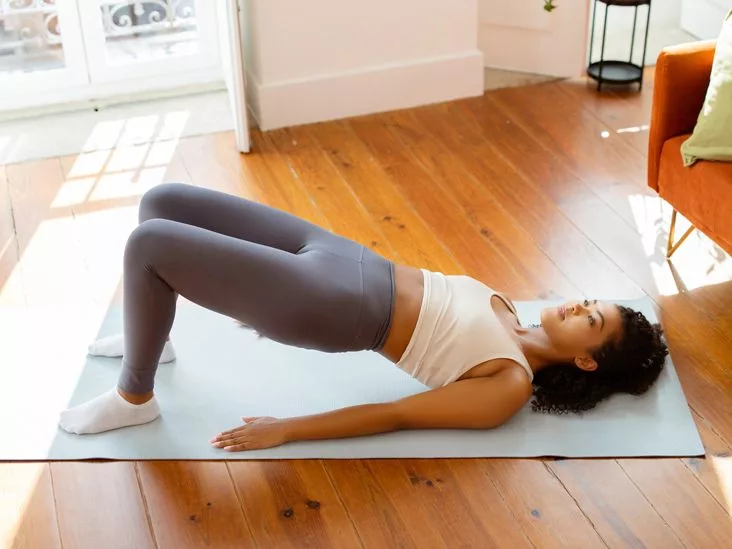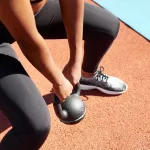Ever wonder why some folks swear by a low‑impact Pilates routine that feels more like a meditation than a workout? That’s because they’re probably doing Somatic Pilates. It’s not just another fitness fad; it’s a gentle blend of classic Pilates moves with the art of listening to your body from the inside out. In the next few minutes, I’ll walk you through exactly what makes this practice special, the real benefits you can expect, a few things to keep an eye on, and a starter routine you can try on your living‑room mat. Grab a glass of water, settle in, and let’s chat like old friends about something that could change the way you move.
Quick Answer
What is it? A slow, mindful version of Pilates that emphasizes how a movement feels rather than how it looks.
Why try it? It releases tension, improves posture, boosts core strength, and deepens body awareness—all without the high‑impact stress of typical gym classes.
How It Differs
Core Principles
At its heart, Somatic Pilates merges two philosophies:
- Somatic focus: You tune into the “felt sense” of each motion—like noticing the subtle shift in your ribcage when you inhale.
- Pilates foundation: Classic core activation, breath‑linked movement, and controlled repetitions keep you safe and effective.
Think of it as a conversation between your brain and body where the brain finally starts listening to what the body is trying to say.
Comparison Table
| Aspect | Traditional Pilates | Somatic Pilates |
|---|---|---|
| Pace | Moderate‑fast, flow‑oriented | Deliberately slow, mindful |
| Cueing | Visual & mechanical cues | Internal sensory cues (“feel the stretch”) |
| Goal | Strength & alignment | Strength + deep body‑awareness |
| Typical Risk | Over‑use, poor form | Under‑activation if too slow |
According to Healthline, this slower, sensation‑based approach helps you spot hidden tension and release it before it turns into chronic pain.
Physical Benefits
Core Strength
Somatic Pilates targets the “powerhouse” muscles—transverse abdominis, pelvic floor, and multifidus—more deeply than many other low‑impact workouts. Because you’re constantly asking, “What does this contraction feel like?” those tiny stabilizers fire up in a way that ordinary Pilates sometimes misses. A 2021 meta‑analysis of Pilates interventions found a significant increase in trunk endurance and a notable reduction in low‑back pain, especially when a somatic mindset was included.
Flexibility & Joint Mobility
Traditional stretching often isolates a muscle, holding it static. In Somatic Pilates you move through a stretch while keeping a gentle load on the tissue. That combination lengthens the muscle and trains it to stay flexible under tension. One study on older adults showed a 28 % boost in hamstring flexibility after a 12‑week somatic Pilates program, directly translating to smoother gait and fewer falls.
Posture & Spinal Alignment
By constantly checking the internal feel of your spine, you learn to correct subtle habits—like a forward head posture or a tucked pelvis—before they become hard‑wired. Clients at The Pilates Studio in Hadley reported a dramatic improvement in “standing tall” after just a few weeks of somatic cueing.
Balance & Fall‑Prevention
When you train proprioception (the brain’s sense of where your body is in space) through slow, precise movements, you dramatically improve balance. The same Healthline article notes that many seniors who practice Somatic Pilates experience a lower risk of falls because they’re more confident in how their bodies move.
Stress‑Relief & Mental Calm
Slowing down and paying attention to breath activates the vagus nerve—your body’s built‑in relaxation engine. Sarah Pritchard’s recent blog describes a “polyvagal approach” where gentle diaphragmatic breathing during Pilates pushes the nervous system into a calm, ventral‑vagal state, leaving you feeling relaxed and centered long after the mat is rolled up.
Body Awareness
Perhaps the most subtle yet profound benefit is the heightened sense of body awareness. When you can name the sensation of a “tight spot” rather than just “pain,” you gain a powerful tool for self‑regulation, injury prevention, and even emotional insight.
Risks & Safety
Common Risks
No exercise is completely risk‑free, and Somatic Pilates is no exception. Here are the most often reported issues:
- Under‑loading: Moving too slowly can mean muscles never get a sufficient challenge, which may limit strength gains.
- Misinterpreting cues: If you mistake a “stretch” for a “sharp pain,” you could reinforce bad movement patterns.
- Neck or lower‑back strain: Failing to keep the core engaged while reaching can put unnecessary load on the spine.
Safety Checklist
Keep these simple steps in mind the first time you step onto the mat:
- Find a qualified instructor: Look for a certified Pilates teacher who also has formal somatic training (Feldenkrais, Body‑Mind Centering, or ISMETA).
- Maintain a neutral spine: Engage your deep core before any limb movement—think of drawing your belly button gently toward your spine.
- Start short: 20‑30 minutes is plenty for beginners; increase gradually as your body adapts.
- Listen to pain signals: “Discomfort” is okay; “sharp pain” is a red flag.
International Somatic Movement Education & Therapy Association (ISMETA) recommends these safeguards for anyone new to somatic work.
Simple Exercises to Start
Beginner‑Friendly Routine
Ready to feel the difference? Grab a mat, wear something comfy, and try these five moves. Each exercise includes a somatic cue to keep your inner listening active.
| Exercise | Target | Somatic Cue |
|---|---|---|
| Pelvic Tilt with Breath‑Guide | Lower back & glutes | Feel the pelvis melt toward the floor on exhale. |
| Spine‑Wave Roll‑Down | Hamstrings & spinal articulation | Notice each vertebra lengthening as you fold. |
| Side‑Lying Hip Mobilization | Gluteus medius | Sense the opening of the hip capsule, not just the motion. |
| Seated Cat‑Cow (Micro‑Movement) | Thoracic spine | Imagine the ribs expanding like a gentle wave. |
| Standing Balance Reach‑Pull | Core & proprioception | Yield toward support, then push gently away. |
Step‑by‑step for the Pelvic Tilt: 1) Lie on your back, knees bent, feet hip‑width apart. 2) Inhale, feel your belly rise. 3) Exhale, gently flatten the low back against the mat—notice the subtle “press” of the pelvis. 4) Repeat 8‑10 times, staying mindful of the breath‑body connection.
Feel free to modify: use a small pillow under the knees if your lower back feels tight, or place a block between your thighs for extra awareness.
Progression Ideas
If the mat feels too easy after a few weeks, try adding a reformer strap for light resistance, or experiment with the polyvagal breathing pattern suggested by Sarah Pritchard—inhale for 4 counts, hold 4, exhale for 6, repeat.
Choosing the Right Class or Instructor
Credentials to Look For
- Certified Pilates Teacher (STOTT, BASB, or equivalent).
- Additional somatic certification (Feldenkrais, Body‑Mind Centering, ISMETA member).
- Continuing education on vagus‑nerve or polyvagal approaches (as mentioned in the Sarah Pritchard blog).
Questions to Ask During a Trial
- “How do you integrate internal sensation with movement cues?”
- “What modifications do you offer for low‑impact needs?”
- “Can you demonstrate a safe progression for someone new to the practice?”
A transparent, knowledgeable instructor will gladly walk you through their teaching philosophy and show you how they keep safety front‑and‑center.
Wrap‑Up
So there you have it—a friendly, straightforward look at Somatic Pilates benefits and what you need to know before you dive in. The practice offers a rare combination of low‑impact strength, genuine flexibility gains, and a heightened sense of body awareness that many traditional workouts simply can’t match. Yes, there are modest risks, but with a qualified teacher, a mindful approach, and the simple safety checklist above, those risks shrink dramatically.
If you’re curious, try the five‑move routine this week, jot down the sensations you notice, and see how even a short 20‑minute session can leave you feeling more relaxed, aligned, and confident in your own skin. And when you’re ready for a deeper dive, consider signing up for a class that blends Pilates with somatic principles—your future self will thank you.
What’s your experience with mindful movement? Have you tried any of the exercises above? Drop a comment, share your thoughts, or ask any questions you might have. I’m excited to hear how this journey unfolds for you!


















Leave a Reply
You must be logged in to post a comment.